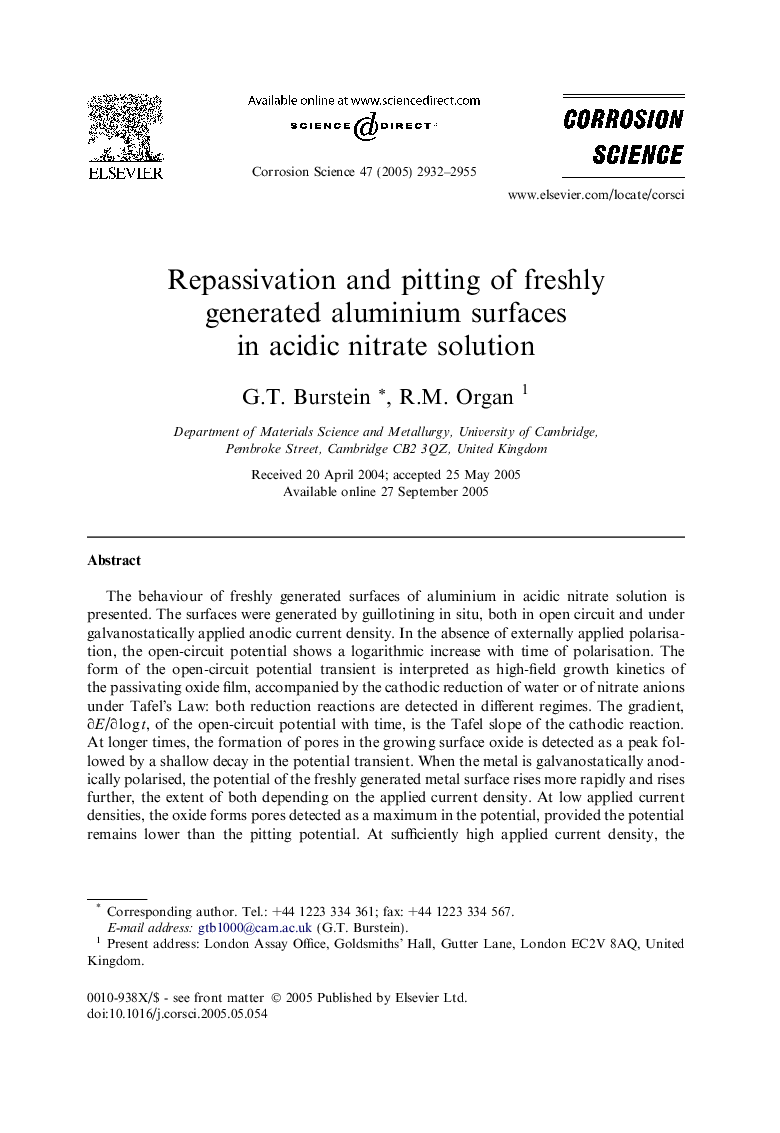| Article ID | Journal | Published Year | Pages | File Type |
|---|---|---|---|---|
| 1472435 | Corrosion Science | 2005 | 24 Pages |
The behaviour of freshly generated surfaces of aluminium in acidic nitrate solution is presented. The surfaces were generated by guillotining in situ, both in open circuit and under galvanostatically applied anodic current density. In the absence of externally applied polarisation, the open-circuit potential shows a logarithmic increase with time of polarisation. The form of the open-circuit potential transient is interpreted as high-field growth kinetics of the passivating oxide film, accompanied by the cathodic reduction of water or of nitrate anions under Tafel’s Law: both reduction reactions are detected in different regimes. The gradient, ∂E/∂ log t, of the open-circuit potential with time, is the Tafel slope of the cathodic reaction. At longer times, the formation of pores in the growing surface oxide is detected as a peak followed by a shallow decay in the potential transient. When the metal is galvanostatically anodically polarised, the potential of the freshly generated metal surface rises more rapidly and rises further, the extent of both depending on the applied current density. At low applied current densities, the oxide forms pores detected as a maximum in the potential, provided the potential remains lower than the pitting potential. At sufficiently high applied current density, the potential rises until the pitting potential is reached. Thence the potential falls a little followed by a constant mean value. The experiments show the pitting potential of aluminium in nitrate solution to be ∼1.6 V(SCE), dependent on the nitrate concentration.
